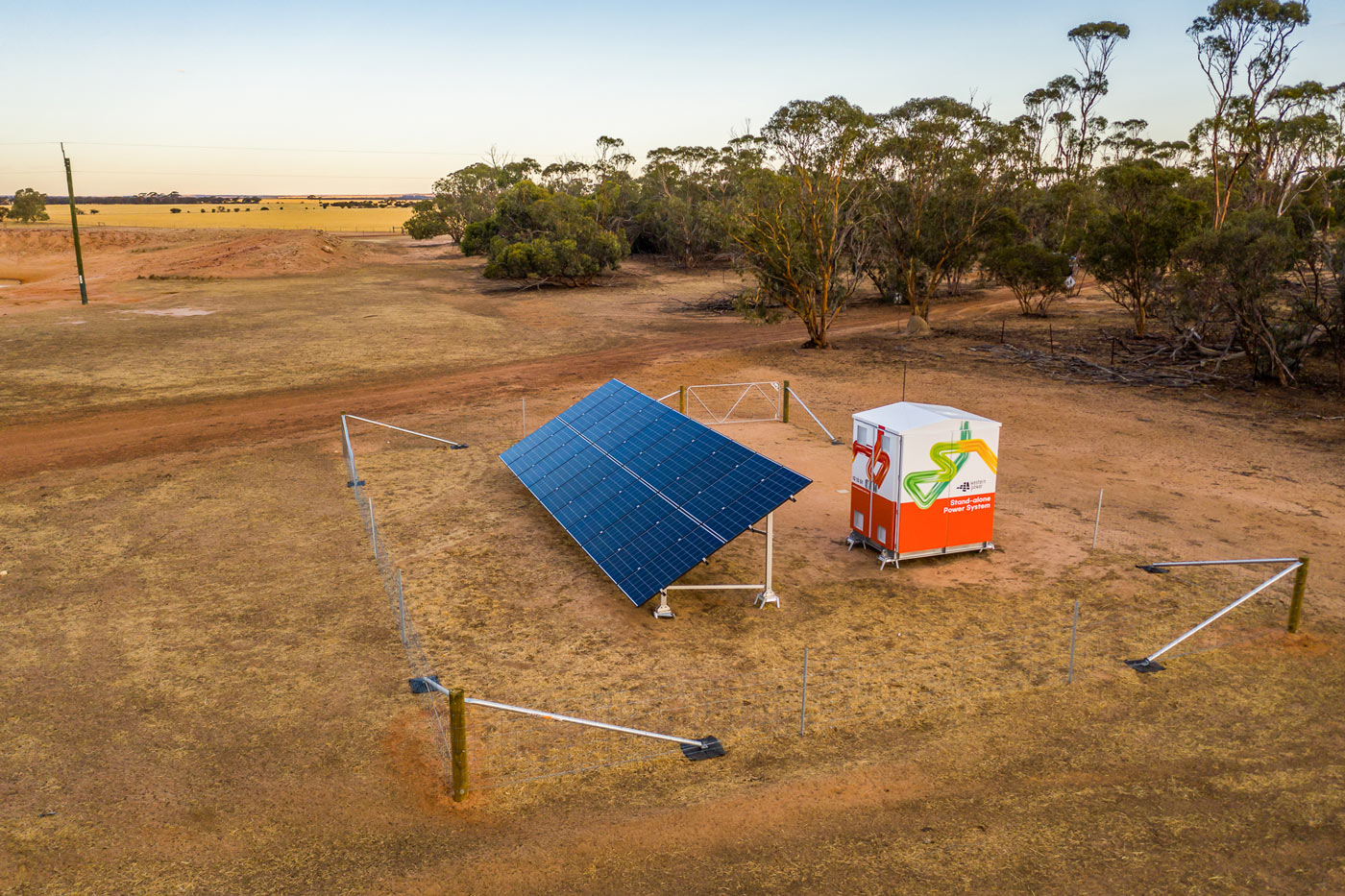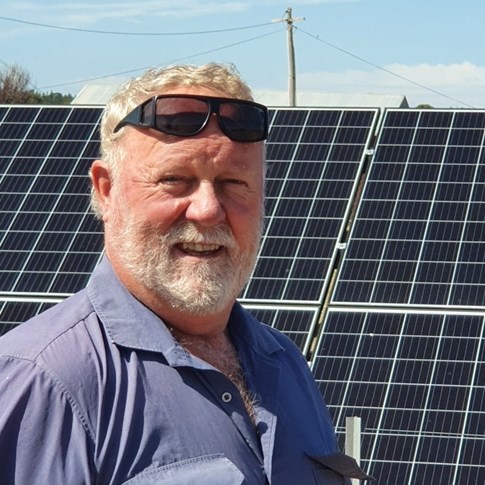FAQs
As a localised renewable technology solution, SPS provide self-sufficient power to rural properties, businesses and locations where they are installed.
They can support various energy needs, from shearing sheds to homesteads, welding and other farm operations.
This means that powerlines to properties that have a SPS will no longer be required and can be removed, significantly reducing the risk of bushfire.
This reduces bushfire risk as long powerlines exposed to dust, debris, lightning and other environmental factors, poses a fire risk. As poles are de-energised, and then removed (decommissioned), this particular risk is eliminated.
SPS are a safer, greener and more reliable power supply alternative for rural WA customers.
Given the range of customer load requirements, we’ve designed our fleet to be modular, with capacity to be upgraded. SPS sizing is based on:
- a detailed review of customer’s historical consumption data
- a site inspection
- the customer’s approved future plans.
In some cases, customer’s will be required to pay for a supply upgrade if they are, or will be, exceeding their current supply. This is a similar scenario for network connected customers.
Our initial customer engagement, site visit and review of historical consumption data is critical in providing us with the information we need to get the SPS sizing right. The nature, timing and duration of the load being used would impact how frequently the backup generation would be used. The design of the system is in accordance with the relevant Australian Standards and a lifecycle assessment is used to identify the optimum mix and usage of solar, storage and backup generation.
We cover the cost of SPS installation, maintenance and replacement. This includes site visits and investigations, system installation and ongoing maintenance. If we identify any faulty electrical equipment on your property we are required by law to disconnect the meter. This is to help keep you safe. The faulty electrical equipment will need to be fixed by a licensed electrical contractor before we can turn your power back on.
Customers will continue to receive a bill from Synergy for the electricity they use. The cost per unit of electricity is the same as network-connected customers, so if your electricity usage stays the same, so will your bill.
Want to lower your power bill? Find easy and energy efficient changes you can make at energy.gov.au
SPS provide significant benefits to customers, and to the operation of our network, particularly across the vast regions covering the Mid-West, Wheatbelt, South-West and Great Southern.
There are criteria used to assess and determine where Western Power will install SPS as an alternative to poles and wires infrastructure.
Customers are identified and selected for a SPS based on the following:
- single or small groups of customers located on the edge of the grid
- network assets in the area that are due for replacement
- the cost of replacing network assets compared with providing SPS to these properties
- topography of the area
- existing network maintenance requirements
- bushfire risks in the area
Western Power will contact customers who are eligible for a SPS as part of our Asset Replacement Program.
Outside that program, customers can purchase a unit, for more information visit our products and services page or submit an enquiry through our customer experience team or submit a pre-application enquiry. Alternatively, you can call us on 13 10 87 (Monday to Friday, 8:30am - 5pm).
The success of our SPS program has resulted in a strong interest from regional families and businesses who are keen to have a SPS installed on their property. Currently, only customers who live on properties that we’ve identified are eligible. We proactively contact customers who meet the eligibility criteria.
Customers can purchase a full cost SPS from Western Power if they aren’t contacted to be part of the SPS asset-replacement program. We recommend making a pre-application enquiry if you would like more information about customer funded SPS options.




